The galactic bar is located in the inner galaxy at a large distance from the Sun. Its closest approach lies in the heavily dust obscured first quadrant. Nevertheless, can we detect the bar using the Gaia DR2 data set? I think that the answer is yes if we are willing to map it using quantitative star counts and do not expect a great deal of detail.
Here's the region in the first quadrant that we want to map:
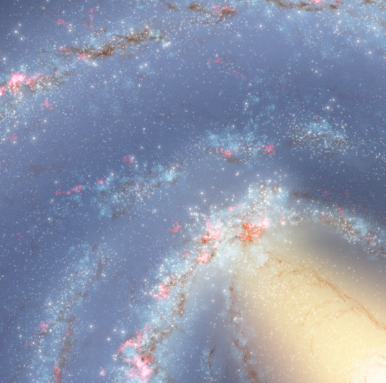
What helps is that the bar extends far above and below the galactic plane and ends in a point. That creates a geometry that can be detected despite all the data limitations.
If we just try to map the bar in the galactic plane, we do not get an encouraging result because of all the dust extinction:
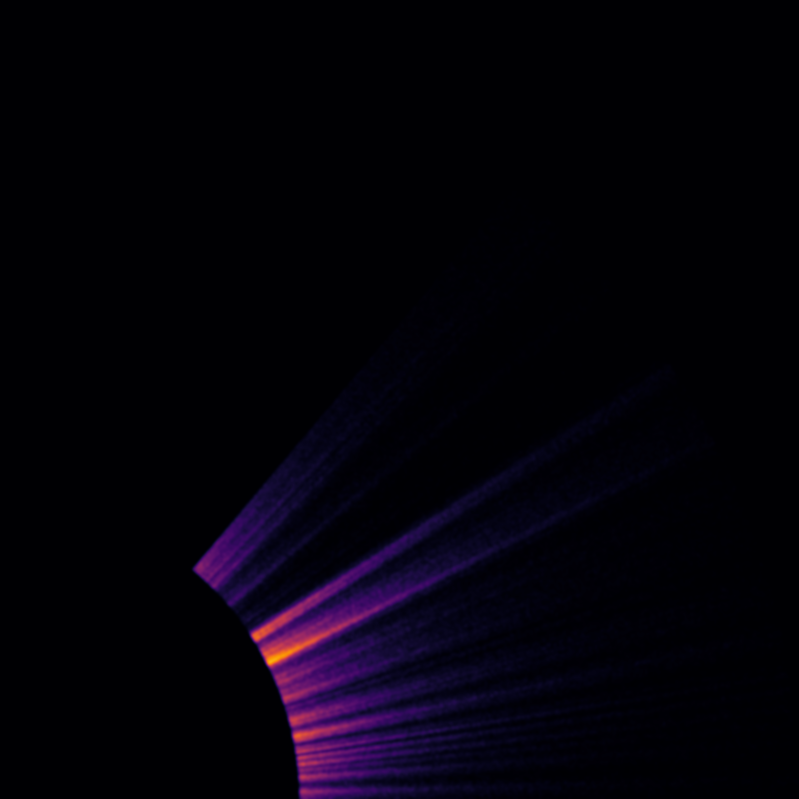
This is a density map of stars between 0 and 50 degrees in galactic longitude and between 3 and 8 kpc. (The parallax errors are so high at this distance that I did not impose any error constraints on the stars except RUWE < 1.4)
However, if we look 400 parsecs below the galactic plane, we can avoid the extinction but now the parallax errors are so high that much of the detail is blurred out:
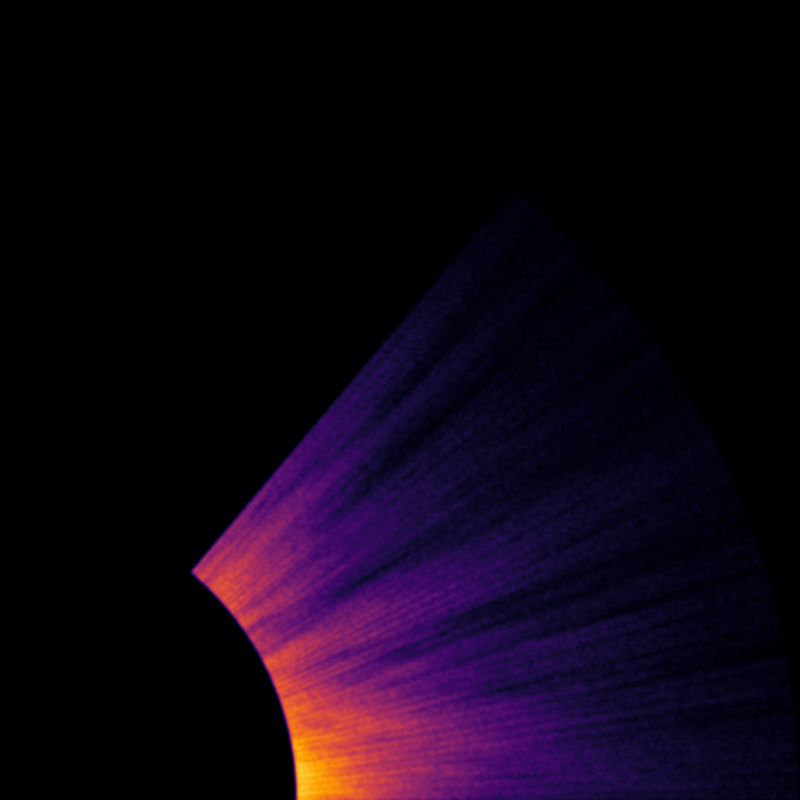
What I think helps is a more quantitative approach using star counts. Here's a graph that analyzes the star counts and distribution, also for a slice taken 400 parsecs below the galactic plane:
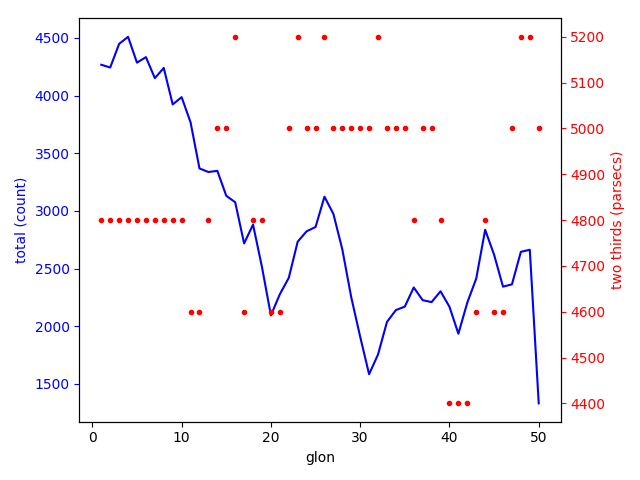
The x axis shows the galactic longitude. The blue data and left y axis shows the total Gaia star count between 3 and 8 kpc for that degree longitude at 400 parsecs below the graphics plane. The red dots and right y axis shows how far you need to go in distance beyond 3 kpc to find two-thirds of the stars for that degree longitude.
What you find is that we start with about 4500 stars close to zero degrees longitude and that as we approach 20 degrees the star count drops and so does the distance required to find two-thirds of the stars. What this says to me is that from 0 to 20 degrees the stars are in a structure that starts wide and gradually narrows to a point - just what you would expect from a bar shaped structure.
I've tried numerous slices and I see the same pattern with the point (end of the bar) occurring around 20 degrees from 400 parsecs below the galactic plane and beyond, as well as about 25-30 degrees from 400 parsecs above the galactic plane and beyond. Larger than about 20-25 degrees we see a pattern that is not so clear but arguably could be two spiral arms passing at different distances from the end of the bar below the galactic plane and one spiral arm above the galactic plane (the arm that passes closest to the end of the bar runs entirely below the galactic plane).
So in short, in the region close to the bar, we seem to see a spiral arm (the Centaurus arm) intersect the bar close to and beneath the tip.
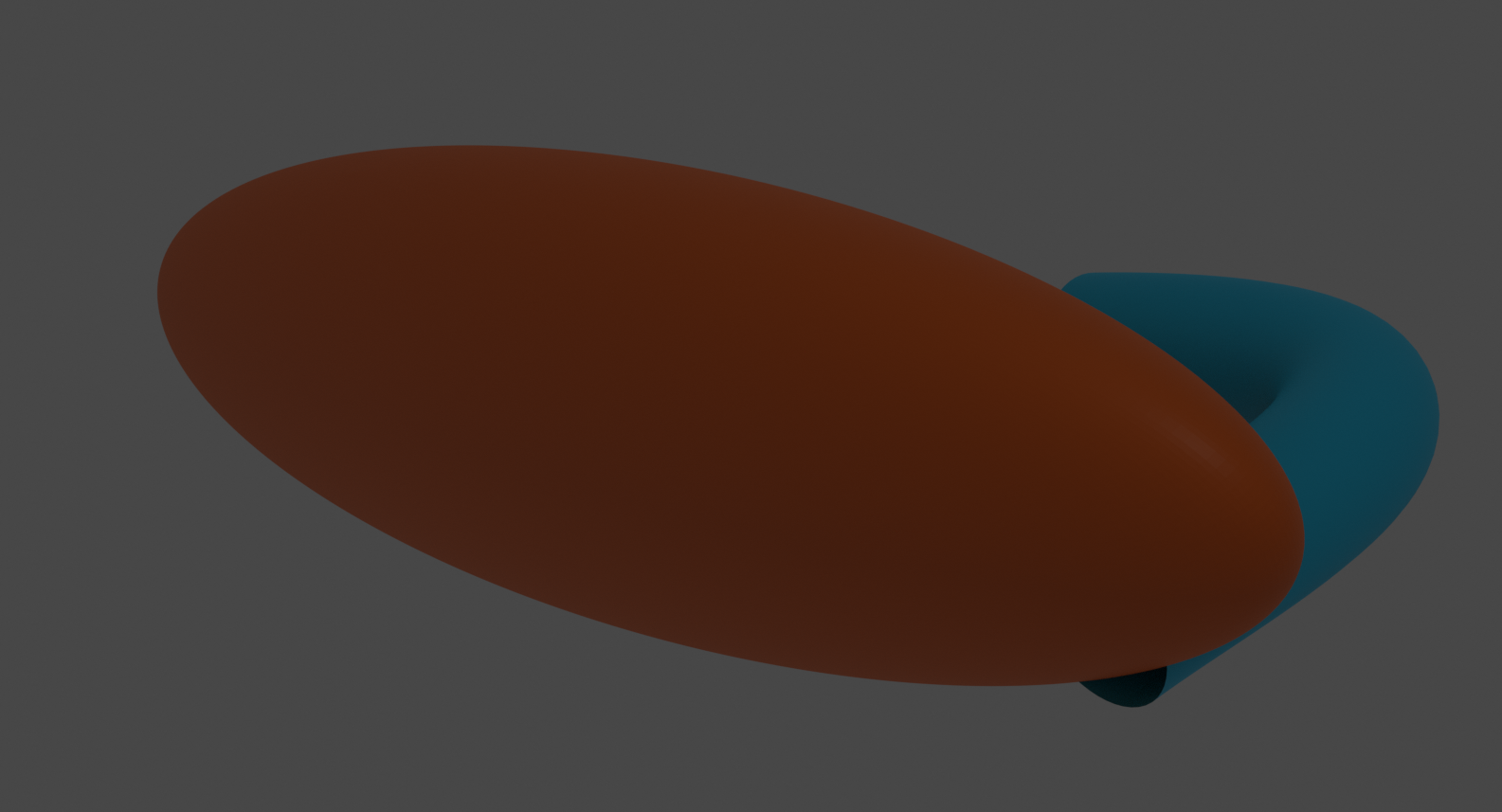
Within 400 parsecs of the galactic plane, the pattern becomes more chaotic, probably because of dust extinction.
